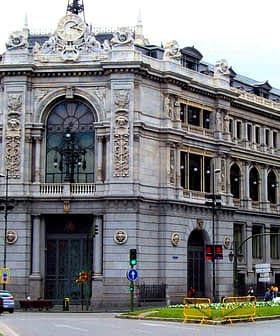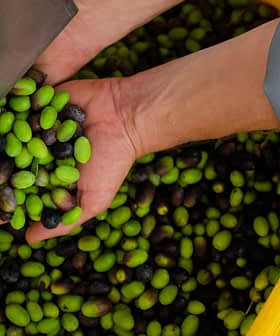Challenges Abound for Spain’s Olive Oil Producers
High prices have buoyed the sector for much of the past year and a half, but rising production costs and persistent drought mean significant challenges lie ahead.
 Andalusia, Spain
Andalusia, Spain Rising prices at origin and demand have bolstered the olive oil sector in Spain for much of the past year. However, the last few weeks have yielded headlines that may temper some of the recent optimism.
Earlier this month, Deoleo reported that its profits in the first half of the year plummeted 57 percent compared to the first half of 2021. The world’s largest olive oil bottler recorded a €6 million profit until June 2022, dropping from €14 million in the first half of the previous year.
“In the complex context that exists worldwide, [Deoleo] has not only had to face the normalization of consumption associated with the end of the global health crisis but also the increase of the prices of raw materials and the tensions suffered in the supply chain caused by the war in Ukraine or the transport strike in Spain,” the company explained in a statement to local media.
See Also:Rising Olive Oil Exports Fuel Trade Surplus in AndalusiaWhile Deoleo and its portfolio of brands will be just fine – plenty of other financial indicators from EBITDA to net financial debt point to this – some of the underlying trends that led to the company’s reduction in profits should concern other producers in Spain.
The normalization of consumption is at the top of this list. During the first two years of the Covid-19 pandemic, olive oil consumption boomed in Spain as strict lockdowns led people to spend more time cooking at home.
Lockdowns in Spain started in March 2020 and lasted until May 2021. During this time, Spanish olive oil consumption jumped to 521,600 tons in the 2019/20 crop year and 537,800 tons during 2020/21, the highest totals since 2013/14.
However, consumption slumped to 510,000 tons in the 2021/22 crop year, the first full crop year with no lockdowns and the resumption of normal service at restaurants.
Consumer surveys in the United States – the second-largest olive oil consumer after the European Union and a significant importer of Spanish olive oil – have also indicated that after two years of cooking at home, consumers feel “drained.” More than one-third of respondents added that their patience in the kitchen is at an “all-time low.”
Along with signs of slumping consumption, Deoleo highlighted rising costs as another reason profits were down. These rising production costs run the gamut from energy to glass bottles.
According to European Union data, fuel and energy costs for businesses have more than doubled since the start of 2021, with a significant increase in energy prices attributed to the Russian invasion of Ukraine.
Olive growers and oil producers use energy for every facet of the olive oil production process, from the electricity or generator fuel to run their mills to the gas and diesel that power tractors, water pumps and other harvesting machines.
Data from the European Central Bank also shows that the price of glass has steadily increased over the past decade, with the increase becoming more pronounced in the past 12 months.
Since September 2021, the price of glass has risen by 16 percent in the European Union. By comparison, glass prices rose by just 14.6 percent between 1995 and 2021.
Similarly, the rising prices of fertilizer, pesticides and replacement parts for tractors and milling equipment have cut into producers’ bottom lines, not only in Spain but across the rest of the olive oil-producing world as well.
Dozens of producers interviewed by Olive Oil Times since the beginning of 2022 said they had so far tried not to pass these prices on to consumers. However, they warned that may change if production costs do not start to decline.
On top of rising production costs, producers in Spain are also facing a crippling drought which has paired back production expectations to just 1 million tons in the 2022/23 crop year.
If these predictions are borne out, the current crop year would be the worst one experienced by Spain since 2014/15 when the country produced just 842,200 tons of olive oil.
While the earliest days of the harvest are about two months away, and timely rainfall between now and then could drastically change the picture, some damage to the current crop is already irreversible.
The lack of rainfall across the Iberian Peninsula – Spain’s meteorological agency recently announced this summer was the driest on record – has led to the desiccation of olive trees across Spain.
While the olive tree is a notoriously drought-resistant crop, it still requires timely rainfall for the oil content of the drupes to form. When the tree does not receive enough water, it drops its olives to conserve water.
As a result, rainfed groves – which account for about 68 percent of all Spanish olive groves – have seen significant fruit drops over the summer. Water rationing has also affected the high-density and super-high-density groves, virtually all of which are irrigated.
In anticipation of a lighter harvest, officials in the most olive-farming-dependant areas are scrambling to mitigate the potential economic devastation.
The provincial council of Jaén, an Andalusian province that produces an average of 600,000 tons of olive oil per annum, recently approved a €10 million employment plan to offset wages lost by olive pickers during the upcoming harvest.
According to Spain’s Ministry of Agriculture, Fisheries and Food, 350,000 farmers in the country grow olives. These farms support an additional 15,000 jobs in the sector, which pay a combined €32 million in wages each year.
Officials in Jaén and other parts of Andalusia are concerned about the ripple effects of the loss of income resulting from the expected poor harvest. They are working on plans to boost tourism and other sectors of the economy to help mitigate the negative consequences of a poor harvest.
While a positive 2021 and start to 2022 demonstrated the strength and potential of Spain’s olive oil sector, tough times are fast approaching. Growers, producers and consumers should be prepared.








